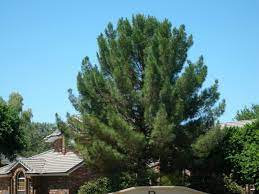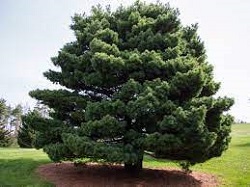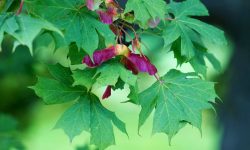When it comes to the natural beauty of forests and landscapes, pine trees play a significant role. With their towering presence and distinctive characteristics, they add elegance and charm to any environment.
Identifying different types of pine trees can be a daunting experience for beginners since most of these trees have close similarities. This tree identification guide will help you avoid confusion.
How to Identify Pine Trees by Needles
One of the key features for identifying pine trees is their needles. The shape, color, and arrangement of needles can provide valuable clues about the tree species. Here’s a simple guide to help you identify pine trees based on their needles:
Clustered Needles
Some pine trees have needles that cluster together. Examples include the Pinus eldarica, Pinus bungeana, and Pinus coulteri. These needles typically grow in groups of two to five.
Single Needles
Other pine trees, such as the Pinus monophylla and Pinus jeffreyi, have single needles attached directly to the branches. These needles are usually long and slender.
Bundles of Two Needles
The Pinus strobus, Pinus nigra, and Pinus resinosa are a few examples of pine trees with needles bundled together in pairs.
Bundles of Three Needles
Pine trees like Pinus densiflora and Pinus taeda have needles grouped in bundles of three.
Different Types of Pine Trees (With Pictures)
All pine trees have needle leaves and cones. But these needle leaves and cones have distinctive appearances due to different pine species. Here is a comprehensive list of pine trees in North America:
Eldarica Pine (Pinus eldarica)

Native to Afghanistan and Iran, the Eldarica Pine is a large tree with a straight trunk. Its mature tree bark is thick and scaly, with a reddish-brown color.
The needles are long and stiff, measuring around 5 to 8 inches in length. This tree can reach heights of 50 to 70 feet and is characterized by large, heavy pine cones with robust scales.
It is an evergreen tree that grows in an upright manner and is often planted for its ornamental value. The Eldarica Pine thrives in USDA zones 7 to 11.
Scientific Name |
Pinus eldarica |
Origin |
Afghanistan and Iran |
Bark Appearance |
Thick and scaly with a reddish-brown color |
Maximum Height |
50 to 70 feet |
USDA Zone |
7 to 11 |
Texas Pinyon Pine (Pinus remota)
The Pinyon pine species are among the types of pine trees for landscaping. It is a small to medium-sized tree ideal for yards experiencing erosion.
The mature tree bark is thin and scaly, with a grayish-brown color. The needles are short, rigid, and grow in bundles of two, measuring around 1 to 2 inches long.
This tree typically reaches heights of 20 to 35 feet. The pine cones can grow up to 1-2 inches long with thick scales. The pine tree is drought-tolerant and well-adapted to the arid regions of Texas.
It is often used for reforestation and erosion control purposes. The tree is suited for USDA zones 7 to 10. But the pine tree can also tolerate extreme conditions.
Scientific Name |
Pinus remota |
Origin |
North America |
Bark Appearance |
Thin and scaly with a grayish-brown color |
Maximum Height |
20 to 35 feet |
USDA Zone |
7 to 10 |
Japanese Red Pine Tree (Pinus densiflora)
The red pine tree species are commonly grown in Japan and Korea. It is a medium-sized evergreen tree with a rounded crown. The mature tree bark has a reddish-brown color and develops a scaly texture.
The needles are medium-length and measure 2 to 4 inches long with a slightly twisted appearance. This tree can reach heights of 40 to 60 feet.
The pine cones are small to medium-sized and grow up to 1.5-2 inches long with thin scales. It is widely cultivated for its ornamental value and is suitable for USDA zones 5 to 8.
Scientific Name |
|
Origin |
|
Bark Appearance |
|
Maximum Height |
|
USDA Zone |
Great Basin Bristlecone Pine Tree (Pinus longaeva)
The pine tree is endemic to the Great Basin region of the western United States. It is known for its longevity and resilience. The mature tree bark is reddish-brown and develops deep furrows.
The short needles measure around 0.5 to 1 inch in length and have a twisted appearance. This slow-growing tree can reach heights of 40 to 60 feet.
The small pine cones measure 2 to 3 inches long and have thick scales with bristles. It is highly valued for its unique beauty and is often used in bonsai cultivation. It thrives in USDA zones 4 to 7.
Scientific Name |
|
Origin |
|
Bark Appearance |
|
Maximum Height |
|
USDA Zone |
Single-Leaf Pinyon Pine Tree (Pinus monophylla)
The pine tree plant hails from the western United States. It is a small to medium-sized evergreen tree. The mature tree bark is light brown and develops a scaly texture.
The single needles are short and measure 1.5 to 2.5 inches long with a rigid texture. This tree typically reaches heights of 15 to 35 feet.
The small pine cones measure 1.5 to 2 inches long and have thick scales. The Single-Leaf Pinyon Pine Tree is valued for its edible pine nuts and is suitable for USDA zones 7 to 8.
Scientific Name |
|
Origin |
|
Bark Appearance |
|
Maximum Height |
|
USDA Zone |
Lacebark Pine Tree (Pinus bungeana)
The pine tree is native to China. This is a medium-sized evergreen tree with an attractive bark pattern. The mature tree bark has patches of white, green, and brown, and peels off in thin, papery strips.
The needles are medium-length, measuring around 2 to 3 inches long, and have a soft texture. This tree can reach heights of 40 to 60 feet.
The small to medium-sized pine cones measure 2 to 3 inches long and have thin scales. The Lacebark Pine Tree is cultivated for its decorative bark and is suitable for USDA zones 4 to 7.
Scientific Name |
|
Origin |
|
Bark Appearance |
|
Maximum Height |
|
USDA Zone |
Mexican Weeping Pine Tree (Pinus patula)
The weeping pine tree is endemic to Mexico and Central America. It is a large evergreen tree with a graceful, weeping form. The mature tree bark is dark brown and develops shallow furrows.
The needles are medium-length and grow up to 3-4 inches long with a soft texture. This tree can reach heights of 60 to 80 feet.
The medium-sized pine cones measure around 2 to 3 inches long and have thin scales. It is often used for landscaping due to its elegant appearance and is suitable for USDA zones 7 to 10.
Scientific Name |
|
Origin |
|
Bark Appearance |
|
Maximum Height |
|
USDA Zone |
Maritime Pine Tree (Pinus pinaster)
The pine tree species are native to the coastal regions of southwestern Europe. It is a tall evergreen tree with a rugged appearance. The mature tree bark is reddish-brown and develops thick, deeply fissured plates.
The long needles measure around 6 to 9 inches in length and have a twisted texture. This tree can reach heights of 60 to 100 feet.
They have medium-sized pine cones that measure about 3 to 4 inches long and have robust scales. It is valued for its timber and is also cultivated for its resin production. It thrives in USDA zones 7 to 9.
Scientific Name |
|
Origin |
|
Bark Appearance |
|
Maximum Height |
|
USDA Zone |
Mugo Pine Tree (Pinus mugo)
The pine tree plant is native to the mountains of central and southern Europe. It is a compact evergreen shrub or small tree. The mature tree bark is dark brown and develops shallow furrows.
The short needle-like leaves measure around 1 to 2 inches long and have a stiff texture. This tree typically reaches heights of 4 to 12 feet.
The pine cones are small, measuring approximately 1 to 2 inches long, and have thick scales. The Mugo Pine Tree is often used in rock gardens and as a bonsai specimen. It is suitable for USDA zones 2 to 7.
Scientific Name |
|
Origin |
|
Bark Appearance |
|
Maximum Height |
|
USDA Zone |
Limber Pine Tree (Pinus flexilis)
The limber pine trees are native to the western United States and Canada. It is a medium to large-sized evergreen tree with a flexible trunk. The mature tree bark is grayish-brown and develops shallow furrows.
The long needles measure around 2.5 to 4 inches long and have a soft texture. This tree can reach heights of 40 to 60 feet.
The medium-sized pine cones are around 2 to 4 inches long and have thin scales. The Limber Pine Tree is valued for its adaptability to harsh climates and is suitable for USDA zones 3 to 7.
Scientific Name |
|
Origin |
|
Bark Appearance |
|
Maximum Height |
|
USDA Zone |
Jeffrey Pine Tree (Pinus jeffreyi)
The pine tree type is found in the western United States. It is a large evergreen tree with a straight trunk. The mature tree bark is reddish-brown and develops thick, plate-like scales.
The needles can grow up to 5-8 inches in length and have a twisted texture. This tree can reach heights of 60 to 80 feet. The medium-size pine cones measure 5-8 inches long and have robust scales.
The Jeffrey Pine Tree is valued for its attractive bark and is suitable for USDA zones 5 to 8. These pine trees are an excellent choice for landscaping.
Scientific Name |
|
Origin |
|
Bark Appearance |
|
Maximum Height |
|
USDA Zone |
Italian Stone Pine Tree (Pinus pinea)
The pine tree is native to Mediterranean regions. It is a medium-sized evergreen tree with a broad umbrella-shaped canopy. The mature tree bark is grayish-brown and develops shallow fissures.
The needles measure around 3 to 5 inches long and have a soft texture. This tree typically reaches heights of 40 to 70 feet. The pine cones can grow up to 4-8 inches long and have thick scales.
The Italian Stone Pine Tree is cultivated for its edible pine nuts and is suitable for USDA zones 7 to 9. They require regular pruning to control their shape and height.
Scientific Name |
|
Origin |
|
Bark Appearance |
|
Maximum Height |
|
USDA Zone |
Foxtail Pine Tree (Pinus balfouriana)
These pine tree plants are native to the mountains of California and Nevada. This medium to large-sized evergreen tree has a unique appearance.
The mature tree bark is grayish-brown and develops shallow furrows. The needles are medium-length, measuring approximately 2 to 3 inches long, and have a soft texture.
This slow-growing tree can reach heights of 30 to 60 feet. The pine cones measure around 3 to 5 inches long and have thin scales. It is well-adapted to high-altitude environments and is suitable for USDA zones 6 to 9.
Scientific Name |
|
Origin |
|
Bark Appearance |
|
Maximum Height |
|
USDA Zone |
Austrian Pine Tree (Pinus nigra)
The pine tree plant hails from Central and Southern Europe. It is a large evergreen tree with a dense pyramidal crown. The mature tree bark is dark grayish-brown and develops deep fissures.
The medium-sized needles measure around 3 to 5 inches long and have a stiff texture. This tree can reach heights of 50 to 80 feet.
They have medium-sized cones that measure 2 to 4 inches long and have robust scales. The Austrian Pine Tree is often used for windbreaks and as a timber source. It thrives in USDA zones 4 to 7.
Scientific Name |
|
Origin |
|
Bark Appearance |
|
Maximum Height |
|
USDA Zone |
Aleppo Pine Tree (Pinus halepensis)
This medium-sized evergreen pine tree has a rounded canopy and is native to the Mediterranean region. The mature tree bark is dark grayish-brown and develops a deeply fissured texture.
The medium-sized needles measure around 3 to 5 inches long and have a stiff texture. This tree typically reaches heights of 40 to 60 feet.
The medium-sized pine cones measure about 2 to 3 inches long and have thick scales. The Aleppo Pine Tree is known for its resilience to drought and is suitable for USDA zones 8 to 10.
Scientific Name |
|
Origin |
|
Bark Appearance |
|
Maximum Height |
|
USDA Zone |
Japanese Black Pine (Pinus thunbergii)
Native to coastal areas of Japan, the Japanese Black Pine is a medium-sized evergreen tree with a rugged and twisted appearance. The mature tree bark is dark brown and develops shallow furrows.
The needles are medium-length and measure around 3 to 5 inches long with a stiff texture. This tree can reach heights of 20 to 80 feet.
The pine cones are small to medium-sized (1.5 to 3 inches long) and have robust scales. The Japanese Black Pine is often used in bonsai cultivation and is suitable for USDA zones 5 to 9.
Scientific Name |
|
Origin |
|
Bark Appearance |
|
Maximum Height |
|
USDA Zone |
Spruce Pine (Pinus glabra)
The spruce pine tree is native to the southeastern United States. It is a medium-sized evergreen tree with a conical canopy. The mature tree bark is reddish-brown and develops shallow furrows.
The medium-lengthed needles measure around 2 to 4 inches long and have a soft texture. This tree can reach heights of 40 to 60 feet.
The pine cones are small to medium-sized, measuring approximately 1.5 to 3 inches long, and have thin scales. The Spruce Pine is valued for its timber and is suitable for USDA zones 6 to 9.
Scientific Name |
|
Origin |
|
Bark Appearance |
|
Maximum Height |
|
USDA Zone |
Sand Pine (Pinus clausa)
The sand pine tree is endemic to the southeastern United States. It is a small to medium-sized evergreen tree with a bushy appearance. The mature tree bark is reddish-brown and develops shallow furrows.
The short needles measure around 1 to 2 inches long and have a stiff texture. This tree typically reaches heights of 20 to 40 feet. The small pine cones are 1.5 to 2 inches long and have thick scales.
The Sand Pine is well-adapted to sandy soils and is often used for reforestation and erosion control. It thrives in USDA zones 8 to 11.
Scientific Name |
|
Origin |
|
Bark Appearance |
|
Maximum Height |
|
USDA Zone |
Pond Pine (Pinus serotina)
This medium-sized evergreen tree with an irregular crown is native to the Southeastern United States. The mature tree bark is reddish-brown and develops shallow furrows.
The needles are medium-length and measure 3 to 5 inches long with a soft texture. This tree can reach heights of 40 to 60 feet.
The pine cones measure around 2 to 3 inches long and have thin scales. The Pond Pine is well-adapted to wetland habitats and is often found near ponds and swamps. It is suitable for USDA zones 7 to 9.
Scientific Name |
|
Origin |
|
Bark Appearance |
|
Maximum Height |
|
USDA Zone |
Whitebark Pine (Pinus albicaulis)
The white pine tree is endemic in the high-elevation mountains of western North America. It is a small to medium-sized evergreen tree with a twisted appearance.
Mature tree bark is light grayish-brown and develops deep furrows. The needle-like leaves measure around 2 to 3 inches long and have a stiff texture. This slow-growing tree can reach heights of 20 to 60 feet.
The pine cones are medium to large-sized and measure 2 to 4 inches long with robust scales. It is highly adapted to cold and rocky environments and is important for wildlife habitat. It thrives in USDA zones 2 to 7.
Scientific Name |
|
Origin |
|
Bark Appearance |
|
Maximum Height |
|
USDA Zone |
Two-Needle Pinyon Pine (Pinus edulis)
The pine tree type is native to the Southwestern United States. It is a small to medium-sized evergreen pine tree with a rounded canopy.
Mature tree bark is grayish-brown and develops shallow furrows. The medium-lengthed needles measure around 1.5 to 2.5 inches long and grow in pairs. This tree typically reaches heights of 20 to 40 feet.
The pine cones are small to medium-sized, measuring about 1.5 to 2 inches long, and have thick scales. The Two-Needle Pinyon Pine is valued for its edible pine nuts and is suitable for USDA zones 5 to 8.
Scientific Name |
|
Origin |
|
Bark Appearance |
|
Maximum Height |
|
USDA Zone |
Red Pine (Pinus resinosa)
The Red Pine is found in the Northeastern United States. It is a tall evergreen tree with a straight trunk and impressive canopy to provide shade.
Mature tree bark is reddish-brown and develops thick, scaly plates. The medium-sized needles measure around 4 to 6 inches long and have a soft texture. This tree can reach heights of 50 to 80 feet.
The pine cones are small to medium-sized, measuring around 1.5 to 3 inches long, and have thin scales. The Red Pine is commonly used for reforestation and timber production. It thrives in USDA zones 3 to 7.
Scientific Name |
|
Origin |
|
Bark Appearance |
|
Maximum Height |
|
USDA Zone |
Sugar Pine Tree (Pinus lambertiana)
This large evergreen tree is native to the western United States and has a tall straight trunk. Mature tree bark is dark brown and develops deep furrows.
The long needles measure around 8 to 12 inches in length and have a soft texture. This tree can reach impressive heights of 150 to 200 feet, making it one of the tallest pine species.
The pine cones are the largest of any pine species measure 10 to 20 inches long and have robust scales. The Sugar Pine Tree is valued for its timber and is suitable for USDA zones 5 to 7.
Scientific Name |
|
Origin |
|
Bark Appearance |
|
Maximum Height |
|
USDA Zone |
Western White Pine Tree (Pinus monticola)
The western white pine tree is native to the western United States. It is a large evergreen tree with a straight trunk and a conical crown. The mature tree bark is grayish-brown and develops shallow furrows.
The long needles measure around 2.5 to 4 inches long and have a soft texture. This tree can reach heights of 80 to 150 feet. The pine cones are medium to large-sized and measure 4 to 8 inches long.
These needle-like leaves have thin scales. The Western White Pine Tree is valued for its timber and is suitable for USDA zones 4 to 7.
Scientific Name |
|
Origin |
|
Bark Appearance |
|
Maximum Height |
|
USDA Zone |
Eastern White Pine Tree (Pinus strobus)
The white pine tree is native to eastern North America. It is a large evergreen tree with a straight trunk and a conical crown. The mature tree bark is grayish-brown and develops shallow furrows.
The long needles measure around 2.5 to 5 inches long and have a soft texture. This tree can reach heights of 70 to 100 feet. The pine cones measure around 4 to 7 inches long and have thin scales.
The Eastern White Pine Tree is valued for its ornamental beauty and is often used in landscaping. It thrives in USDA zones 3 to 8.
Scientific Name |
|
Origin |
|
Bark Appearance |
|
Maximum Height |
|
USDA Zone |
Pitch Pine Tree (Pinus rigida)
The pitch pine trees are native to the Eastern United States. It is a medium-sized evergreen tree with a twisted and contorted appearance.
Mature tree bark is dark reddish-brown and develops deep furrows. The medium-sized needles measure around 3 to 5 inches long and have a stiff texture. This tree typically reaches heights of 40 to 60 feet.
The pine cones are medium-sized, measuring about 2 to 3 inches long, and have thick scales. The Pitch Pine Tree is known for its ability to withstand harsh conditions, including fire, and is suitable for USDA zones 4 to 8.
Scientific Name |
|
Origin |
|
Bark Appearance |
|
Maximum Height |
|
USDA Zone |
Gray Pine Tree (Pinus sabiniana)
The pine tree is also called the Foothill pine or Digger pine and hails from California state. This medium-sized evergreen tree has a rounded crown for easy identification.
Mature tree bark is grayish-brown and develops deep furrows. The long needles measure 6 to 12 inches long and have a stiff texture. This tree can reach heights of 30 to 70 feet.
The pine cones are large, measuring around 6 to 10 inches long, and have robust scales. The Gray Pine Tree is well-adapted to dry, rocky habitats and is suitable for USDA zones 7 to 9.
Scientific Name |
|
Origin |
|
Bark Appearance |
|
Maximum Height |
|
USDA Zone |
Coulter Pine (Pinus coulteri)
The pine tree plant is native to the coastal mountains of California and the Northern Baja of California. It is a large evergreen pine tree with a distinctive appearance.
Mature tree bark is dark brown and develops deep furrows. The long needles measure around 8 to 12 inches long and have a stiff texture. This tree can reach heights of 60 to 80 feet.
The pine cones of the Coulter Pine are among the largest since each measures 8 to 15 inches long and has robust scales with sharp spines. It is valued for its unique aesthetic and is suitable for USDA zones 8 to 10.
Scientific Name |
|
Origin |
|
Bark Appearance |
|
Maximum Height |
|
USDA Zone |
Ponderosa Pine (Pinus ponderosa)
The pine tree species are found in North America and Canada. It is a large evergreen tree with a straight trunk and an open-rounded crown.
Mature tree bark is reddish-brown and develops thick, puzzle-like plates. The long needles measure around 5 to 10 inches in length and have a stiff texture.
This tree can reach heights of 60 to 125 feet. The medium-size pine cones measure around 3 to 6 inches long and have robust scales. It is valued for its timber and is suitable for USDA zones 3 to 7.
Scientific Name |
|
Origin |
|
Bark Appearance |
|
Maximum Height |
|
USDA Zone |
Lodgepole Pine (Pinus contorta)
The pine tree is native to western North America. The medium-sized evergreen tree has a slender and cylindrical-shaped trunk.
Mature tree bark is dark brown and develops scaly plates. The medium-size needles measure around 1.5 to 3 inches long and have a twisted appearance.
This tree typically reaches heights of 40 to 80 feet. The pine cones are small to medium-sized measure 1.5 to 2.5 inches long and have thin scales.
The pine tree plant is known for its serotinous cones, which require fire for their release and germination. The Lodgepole Pine is adaptable to various soil conditions and is suitable for USDA zones 3 to 7.
Scientific Name |
|
Origin |
|
Bark Appearance |
|
Maximum Height |
|
USDA Zone |
Virginia Pine (Pinus virginiana)
Native to the southeastern United States, the Virginia Pine is a small to medium-sized evergreen tree with a rounded crown. The mature tree bark is reddish-brown and develops shallow furrows.
The short needles measure around 1.5 to 3 inches long and have a stiff texture. This tree typically reaches heights of 20 to 60 feet. The small to medium-sized pine cones measure around 1.5 to 2.5 inches long.
The needles have thin scales and the pine can be used for reforestation or as a Christmas tree due to its attractive form. It thrives in USDA zones 5 to 8.
Scientific Name |
|
Origin |
|
Bark Appearance |
|
Maximum Height |
|
USDA Zone |
Slash Pine (Pinus elliottii)
These types of pine trees for landscaping are fast-growing and native to the Southeastern United States. The evergreen tree has a straight trunk with an open-pyramidal crown.
Mature tree bark is dark brown and develops deep furrows. The medium-sized needles measure around 6 to 9 inches long and have a soft texture.
This tree can reach heights of 60 to 100 feet. The medium-sized pine cones measure 3 to 6 inches long and have robust scales. It is valued for its timber used in construction and paper production. It thrives in USDA zones 7 to 10.
Scientific Name |
|
Origin |
|
Bark Appearance |
|
Maximum Height |
|
USDA Zone |
Loblolly Pine (Pinus taeda)
The pine tree plant is native to the Southeastern United States. It is a large evergreen tree with a straight trunk and a pyramidal crown.
Mature tree bark is dark brown and develops scaly plates. The medium-sized needles measure around 6 to 9 inches long and have a soft texture.
These types of white pine trees can reach heights of 90 to 110 feet. The medium-sized pine cones measure around 3 to 6 inches long and have robust scales. It thrives in USDA zones 6 to 9.
Scientific Name |
|
Origin |
|
Bark Appearance |
|
Maximum Height |
|
USDA Zone |
Bristlecone Pine (Pinus aristata)
This pine tree species is endemic to the high elevation of the Western United States. It is a small to medium-sized evergreen tree with a twisted and gnarled appearance.
Mature tree bark is light brown to grayish and develops deep furrows. The short needles measure around 0.5 to 1 inch long and have a stiff texture.
This slow-growing tree can reach heights of 20 to 60 feet. The pine cones are small and measures around 1 to 2 inches long with thin scales.
Bristlecone Pines are among the types of pine trees for landscaping due to their exceptional longevity and can thrive in extreme conditions. They are suitable for USDA zones 3 to 7.
Scientific Name |
|
Origin |
|
Bark Appearance |
|
Maximum Height |
|
USDA Zone |
Shortleaf Pine (Pinus echinata)
These evergreen pine tree species are native to the Southeastern United States. This medium-sized evergreen tree has a straight trunk with an open-rounded crown.
Mature tree bark is reddish-brown and develops scaly plates. The medium-sized needles measure around 3 to 5 inches long and have a soft texture. This tree typically reaches heights of 60 to 80 feet.
The pine cones of the Shortleaf Pine are small to medium-sized with a length of 2 to 4 inches and have thin scales. The Shortleaf Pine is valued for its timber and is suitable for USDA zones 6 to 9.
Scientific Name |
|
Origin |
|
Bark Appearance |
|
Maximum Height |
|
USDA Zone |
Longleaf Pine (Pinus palustris)
The longleaf pine tree hails from the Southeastern United States. This large evergreen tree has a straight trunk with a pyramidal crown.
Mature tree bark is reddish-brown and develops deep furrows. The needles of the Longleaf Pine are long and measure around 8 to 18 inches long with a soft texture.
This tree can reach heights of 80 to 100 feet with pine cones measuring 6-10 inches long and have robust scales. It is highly valued for its timber. It thrives in USDA zones 7 to 10.
Scientific Name |
|
Origin |
|
Bark Appearance |
|
Maximum Height |
|
USDA Zone |
Jack Pine Tree (Pinus banksiana)
The pine tree is native to North America. This small to medium-sized evergreen tree has a scraggly and irregular form appearance.
Mature tree bark is grayish-brown and develops scaly plates. The short needles measure around 1 to 2 inches long and have a stiff texture. This tree typically reaches heights of 30 to 70 feet.
The pine cones are small to medium-sized measuring around 1.5 to 3 inches long with thin scales. The Jack Pine is well-adapted to harsh environments. It thrives in USDA zones 2 to 6.
Scientific Name |
|
Origin |
|
Bark Appearance |
|
Maximum Height |
|
USDA Zone |
Scots (Scotch) Pine Tree (Pinus sylvestris)
The scots pine trees are native to Europe and some parts of Asia. It is a medium-sized evergreen tree with a straight trunk and an open-rounded crown.
Mature tree bark is reddish-brown and develops scaly plates. It has medium-sized needs that measure about 1.5 to 3 inches with a stiff texture. This tree typically reaches heights of 50 to 80 feet.
The pine cones of the Scots Pine are small to medium-sized measure around 1 to 2 inches long with thin scales. It is ideal for reforestation or timber and resin production. It thrives in USDA zones 3 to 7.
Scientific Name |
|
Origin |
|
Bark Appearance |
|
Maximum Height |
|
USDA Zone |
Western White Pine Tree (Pinus monticola)
The pine species hails from the Western United States and Canada. The large evergreen tree has a straight trunk with a conical canopy to provide shade.
Mature tree bark is grayish-brown and develops shallow furrows. The long needles measure about 2.5 to 4 inches and have a soft texture.
This tree can reach heights of 80 to 150 feet. The pine cones are medium-sized (4-8 inches long) and have thin scales. The Western White Pine Tree is valued for its timber and is suitable for USDA zones 4 to 7.
Eastern White Pine Tree (Pinus strobus)

The Eastern white pine tree is native to Eastern North America. The large evergreen tree has a straight trunk and a conical crown for easy identification.
Mature tree bark is grayish-brown and develops shallow furrows. The needles are long, measuring around 2.5 to 5 inches long, and have a soft texture.
This tree can reach heights of 70 to 100 feet. The pine cones are medium-sized ( 4 -7 inches long) with thin scales. It is valued for its ornamental beauty and is often used in landscaping. It thrives in USDA zones 3 to 8.
Scientific Name |
Pinus strobus |
Origin |
Eastern North America |
Bark Appearance |
grayish-brown with shallow furrows |
Maximum Height |
70 to 100 feet |
USDA Zone |
3 to 8 |
People Who Read This Also Read:







